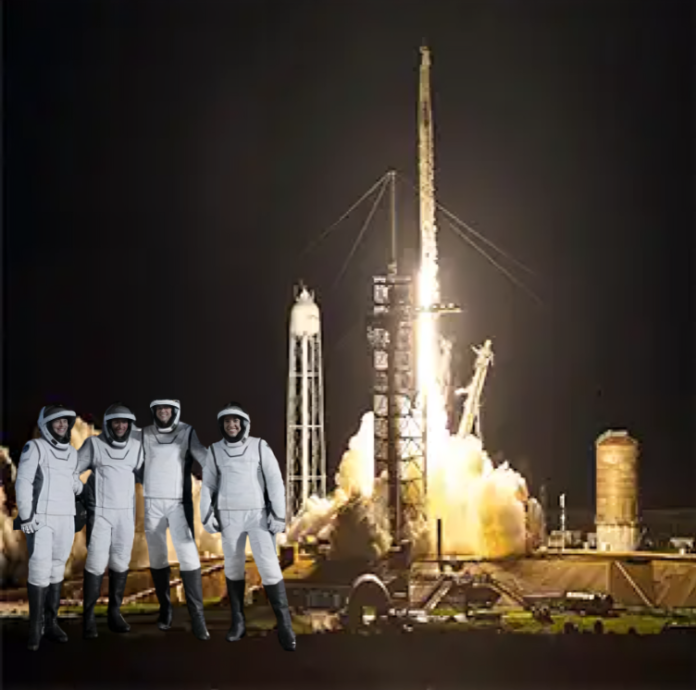The SpaceX Polaris Dawn Mission is making headlines as a pioneering private crew prepares for a historic milestone—the first-ever spacewalk by non-professional astronauts. Led by fintech billionaire Jared Isaacman, the SpaceX Polaris Dawn Mission launched from the Kennedy Space Center in Florida, achieving an impressive peak altitude of 870 miles (1,400 kilometers). This altitude is over three times higher than that of the International Space Station, venturing into the inner Van Allen radiation belt, an area rich with hazardous, high-energy particles.
Currently, the crew of four is gearing up for the mission’s main event: a daring extravehicular activity (EVA) scheduled at 0958 GMT, with a backup window. The SpaceX Polaris Dawn Mission has adjusted its timeline slightly, planning a webcast of the event an hour before the spacewalk on its official website.
Before the hatch opens, the crew will engage in a “prebreathe” process to eliminate nitrogen from their blood, safeguarding against decompression sickness.The cabin pressure will then be gradually lowered to align with the pressure in space. Once opened, Isaacman and crewmate Sarah Gillis, a SpaceX engineer, will take turns using a structure attached to the hatch, referred to as “Skywalker,” which is equipped with hand and footholds.
“It’ll look like we’re doing a little bit of a dance,” Isaacman joked during a recent press conference. This EVA serves as a stress test for SpaceX’s cutting-edge suits, featuring heads-up displays, helmet cameras, and advanced joint mobility systems. Unlike early astronauts such as Soviet cosmonaut Alexei Leonov or NASA’s Ed White, who floated on tethers, the crew will remain anchored to the spacecraft while orbiting Earth at approximately 17,500 mph.
With the Crew Dragon capsule lacking an airlock, the entire crew will face the vacuum of space for about two hours during the spacewalk. Once the hatch is sealed, the cabin will be repressurized, restoring oxygen and nitrogen levels to their normal state.
Mission pilot Scott Poteet and SpaceX engineer Anna Menon will oversee vital support systems, while Isaacman and Gillis are expected to spend 15 to 20 minutes partially outside the craft. “The risk is greater than zero, that’s for sure, and it’s certainly higher than anything that has been accomplished on a commercial basis,” remarked former NASA administrator Sean O’Keefe.
Also Read: SpaceX Constellation Makes Up 62% of Global Satellites
The SpaceX Polaris Dawn Mission marks a significant step toward the commercialization of space transportation, with the crew’s extensive training involving hundreds of hours in simulators, skydiving, centrifuge training, scuba diving, and even summiting an Ecuadoran volcano. In addition to the spacewalk, the crew will conduct tests of laser-based satellite communications with the extensive Starlink satellite constellation and carry out 36 scientific experiments, including research on contact lenses equipped with microelectronics to monitor changes in eye pressure and shape in space.
Also Read: China Launches Geespace Satellites to Compete with Starlink
The Polaris Dawn Mission marks the inaugural journey of the three-part Polaris program, a collaborative effort between Isaacman and SpaceX. While financial details remain undisclosed, Isaacman, the founder and CEO of Shift4Payments, has invested around $200 million into the venture, building on his experience from the all-civilian SpaceX Inspiration4 mission in 2021. The final mission is expected to be the first crewed flight of SpaceX’s Starship, which is pivotal to Elon Musk’s vision of colonizing Mars.


